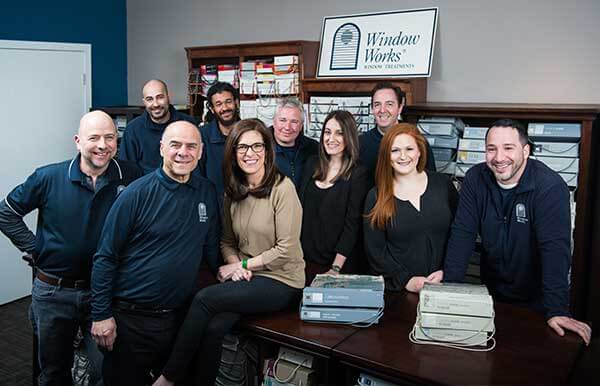Design an Outstanding Customer Experience

- By LuAnn Nigara
- August 27, 2019
- Window Fashion Vision Magazine
I love my window treatments! The installation was impeccable! The customer service was stellar! I would use this company again and I will recommend them to my family and friends!
Home run, right?
How do we hit it out of the park with our customers so we earn rave reviews like these? These are gold because they generate repeat and referral customers which propel our business and grow our profits.
If you are in business for any length of time you already know that it takes everything from hello to goodbye to create a loyal customer who also becomes our cheerleader.
Our first impression, our product knowledge, the product quality, timely delivery, installation quality, repair and service guarantees, all contribute to our customer’s overall satisfaction and will inform their opinion of us and our company.
However, possibly the most important things we can do to design an outstanding customer experience happen before we turn a prospect into a customer.
Establish the Rules of Engagement
At the very beginning of the relationship with our potential customer, we must begin with crystal clear information about our order process and what they can expect from us and our company. Please take note, I used the phrase, potential customer. To truly set the stage for an outstanding customer experience we must start long before the contract is signed.
For mutual understanding and agreement to be of any value it must happen when both parties still have the opportunity to decline engagement or to negotiate the terms of engagement. It is our responsibility to establish the terms, not our customers’ responsibility.
In fact, we want to be the one to set the stage because as important as it is to be honest about what we will do for them, it is also critical we express what we will not do for them. The client experience is built on a foundation of respect, transparency, and trust.
When we set up our customers’ expectations before the contract, before the order process, they can evaluate if they can see themselves in our process and consciously agree to it. Once we have an agreement it enables us to avoid much of the conflict that occurs further down the order process.
Decide What to Discuss Prior to a Signed Contract
Days and times we’re available for consults and installs.
Are night and weekend appointments an option or strictly Monday to Friday 9 to 5?
Additional fees beyond the product.
Do you charge extra for measuring and installing?
Communication.
Is it acceptable through email, text, cell phone or strictly through your admin?
Monies due.
Do you accept checks and credit cards? Do you collect 50%, 75% deposit before ordering and when do you collect the balance due?
Problems.
Do you have a specific process?
Warranties.
Do they cover service and labor or product only?
It is important to carefully review our process and share it with full transparency with our potential client. For example, if you do not work on weekends there is no benefit to concealing this and every reason to be sure it is clearly understood.
In the moment of arranging installation is not the time a customer should discover they cannot have it on Saturday. Maybe our sales team sees clients on weekends but the installation team does not. A customer whose sales visits took place on Saturday probably won’t even think to ask if the install could be on the weekend. You can see how they would infer this, right?
It is our responsibility to bring it to their attention. Simply phrase it from a positive point of view during the sales process. Typically, I’ll say, “When it comes time for installation we have a terrific team of installers who are available Monday- Friday, 9am to 5pm, so when our showroom coordinator contacts you with an install date, if it is not convenient please go ahead and ask her for a different one”.
Sometimes the potential customer will say, “Oh I need a Saturday installation”. This is my opportunity to explain now, before they order, that this is not possible.
If this is a deal-breaker for them we do not have a disagreement or a problem, we merely have discovered incompatibility. There is no drama at this point because neither of us are at a disadvantage.
We are still agreeing to the rules of engagement. The customer who could only have Saturday install will nearly always decide they can make arrangements for a weekday if they know this ahead of time. For the ones that absolutely cannot or will not, I have the opportunity at this point to evaluate if I will change my rules for this customer or if I will decline the order.
We can go forward in agreement or we can part amicably. In my experience when there is conflict in expectations and they are in the open, before contract, they can almost always be worked out to everyone’s satisfaction.
It is the surprise after the fact that upsets our customers.
If we are not specific and honest prior to engagement it often becomes a problem later. At that time, if we are smart, we bend, because the responsibility is always ours to explain our process and the parameters.
Be Honest About Lead Times
There are probably very few things that irritate customers more than when we miss deadlines. A day, a week might not be so horrible but longer than that and we will affect their opinion of our business. Being late causes pangs of distrust, of wondering if they have been manipulated.
Even when we eventually come through, the scar tissue is left, along with the hangover of unmet expectations. A missed deadline is reason enough to cause feelings of resentment, however, sometimes emotional reasons are behind the dissatisfaction.
Maybe they made plans, based on the timeline, for entertaining and for showing off their new drapes. Happy and excited is quickly replaced with annoyed and disgruntled.
The solution, we have to tell the truth. If our lead times are running six weeks, we must be direct. Remember the adage, under-promise and then over-deliver? Let’s explain the lead times are seven to eight weeks and maybe we can be the hero in the sixth week.
Knowing someone wants or needs something completed in four and promising it in order to get the sale when we know we cannot deliver is bad business. If a potential customer demands four weeks and we are upfront that seven or eight weeks is more realistic, it now becomes their choice to purchase within these conditions.
The only way they can enter into the contract is under this agreement, so there are no surprises, unless of course it’s a nice surprise. If we keep an eye on it, if we can move things along, we have the chance to come out looking pretty awesome in their eyes. It’s better to be the bad guy before contract and the good guy after, rather than the reverse.
Teach Them What to Like About Your Company
I believe it is a smart habit for each of us to tell our potential customers exactly what is so great about working with our company and our team. As business owners, we work hard to train our team, to set standards for conduct and quality and it is to our advantage to make sure this is seen, heard and experienced.
We can set the stage for a positive experience by calling attention to the things that might be taken for granted or go unnoticed.
Examples include:
- Your staff are long-time employees which indicates loyalty, commitment and stability.
- Someone has a particular skill set that sets them apart, such as an expertise in motorization.
- You have a showroom which is particularly beautiful and pleasant to be in.
- You send confirmation emails for all appointments so they have peace of mind in knowing appointment dates and times are confirmed.

An example which is personal to us at Window Works relates to Adriana, our showroom coordinator. Adriana is probably the most liked showroom coordinator by our customers in our more than 35 years in business.
We are regularly told by customers how pleasant she is, how thorough and how responsive she is. So, what do we do? We tell every potential customer how much they are going to like working with her! We enthusiastically explain how often we are complimented on her work and her outgoing personality by customer after customer, month after month, year after year.
We teach them how to think about her. What does it accomplish? This triggers the new customer to notice exactly how helpful she actually is.
Subconsciously they are expecting it, so when it happens, they truly notice it and feel it. The difference is subtle but it is real. What was simply a pleasant exchange with little impression one way or another, instead becomes: “Wow! Adriana really is terrific and this is such a pleasure doing business with Window Works”.
Plant all the good seeds about what you and your team do well so when they do them they will be duly appreciated and valued.
The thread that runs through this entire process, the ability to design an outstanding customer experience, is communication. Success is found in our ability to be clear, our ability to have not just the easy conversations but the hard ones too and in our ability to be optimistic yet realistic.
By communicating honestly in our agreements and in our actions, we ensure our customer has a memorable experience. When we do this, they will reward us by returning to us and by bringing their friends along too.








